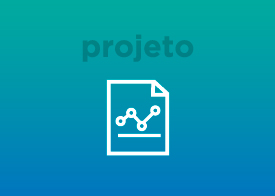Descrição: Patient-centered Care (PCC) is one of the most important indicators in a hospital, focusing on the quality of the provided care. From an ICT point of view, PCC refers to any medical information system centered on patient-related data, including the Electronic Health Record (EHR). However, data collection in hospitals is still done manually, by nurses and physicians, who typically perform patient surveillance in this environment, and then add this data to the EHR. Another typical characteristic of these systems is the lack of prediction algorithms or methods for anticipating future clinical conditions of the patient. Recent advances in areas such as Internet of Things (IoT), Machine Learning (ML) and Computer Vision (CV), can improve the PCC in hospitals, qualifying the information generated from the EHR and allowing automated surveillance of patients. IoT supports a connection between objects and humans, enabling the ubiquitous computing in our daily lives. Considering the current scenarios, both real-time communication and scalability are key requirements for supporting the current exponential growth of IoT. Future research directions in IoT framework should consider both requirements to provide a better experience to the users when managing with large volumes of complex data. Inside an EHR there is a high number of medical records that accommodates structured and unstructured data, including texts in natural language. The treatment of unstructured information contained in the EHR is associated with the possibility of significant advances in research in this area. The integration of additional data sources, in particular those originated from new devices such wearables or other IoHT sensors, allows further advances and more complete diagnosis. Another related concept is computer vision, the automated analysis of images and videos by computers in order to gain some understanding of the world . Studies related to computer vision have developed mathematical techniques for feature extracting and matching, recognition, motion estimation and 3D reconstruction in imagery and video. These techniques can contribute to the development of image-based diagnostic and patient monitoring systems. Recent work exploring the combination of CV and ML led to the development of turnkey solutions that benefit from extensive data collection and massive data processing in order to extract meaningful information for decision-making. This proposal lies in the intersection of the IoT, ML, and CV concepts, and their applicability to provide better patient care in hospitals. To the best of our knowledge, there is no current solution available that combines these concepts for providing clinical diagnosis and automated surveillance of patients.
Situação: Em andamento.
Natureza: Pesquisa.
Alunos envolvidos: Mestrado acadêmico: (2) Doutorado: (5).
Integrantes: Cristiano André da Costa – Coordenador / Rodolfo Stoffel Antunes – Integrante / Sandro José Rigo – Integrante / Luiz Gonzaga Silveira Jr. – Integrante / Rodrigo da Rosa Righi – Integrante / Andreas Maier – Integrante / Bjoern Eskofier – Integrante / Jennifer Maier – Integrante / Julia Schottenhamml – Integrante.
Financiador(es): Coordenação de Aperfeiçoamento de Pessoal de Nível Superior – Auxílio financeiro.



